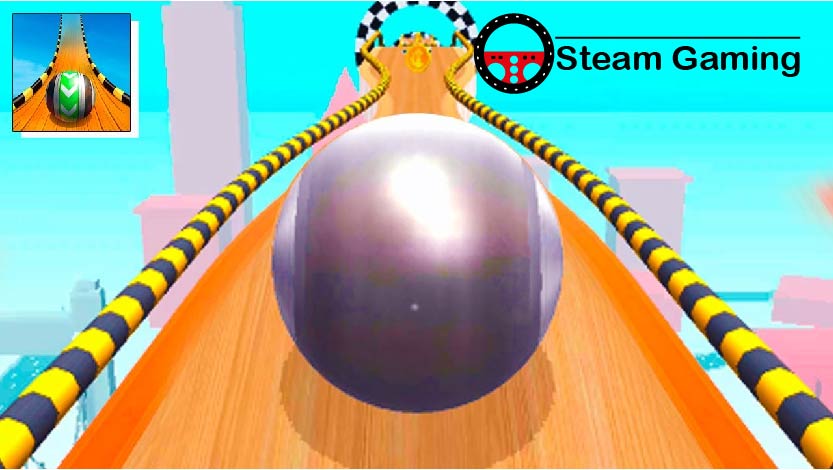Rolling ball games have become increasingly popular, combining elements of physics, strategy, and entertainment. These games, which involve maneuvering a ball through challenging obstacles, offer endless fun while testing players’ precision and problem-solving skills. This guide explores everything about rolling ball games, from their mechanics and variations to tips for improving your gameplay.
What is a Rolling Ball Game?
A rolling ball game is a type of game where the player controls a ball, guiding it through various paths, levels, or mazes. The objective typically involves completing the course, avoiding obstacles, or reaching a target in the shortest time possible. These games can be physical board games, arcade-style digital games, or even mobile app games.
Key Features of Rolling Ball Games:
- Physics-Based Gameplay: Realistic movement dynamics influenced by gravity, speed, and friction.
- Engaging Obstacles: Challenges like ramps, pits, rotating platforms, or moving barriers.
- Variety of Environments: Levels set in imaginative worlds, such as space, forests, or futuristic cities.
Types of Rolling Ball Games
1. Physical Rolling Ball Games
- Examples: Labyrinth Maze, Perplexus
- These are tangible games where players tilt a surface to roll the ball to a designated area while avoiding traps or holes.
2. Digital Rolling Ball Games
- Examples: Marble Madness, Ball Blast, Going Balls
- Available on mobile devices, consoles, or PCs, these games offer dynamic levels with vibrant graphics and interactive gameplay.
3. Arcade Rolling Ball Games
- Examples: Skee-Ball, Ball Drop Machines
- Found in arcades, these involve rolling balls into specific slots or targets to score points.
4. Team-Based Rolling Ball Games
- Examples: Soccer Bowling, Rolling Relay Races
- Designed for group activities, these games emphasize teamwork and coordination.
The Mechanics Behind Rolling Ball Games
Rolling ball games are heavily influenced by the principles of physics, making them not just entertaining but also educational. Understanding these mechanics can help improve your gameplay.
| Mechanic | Description |
|---|---|
| Gravity | Determines the ball’s movement on inclined or declined surfaces. |
| Friction | Affects the speed and stopping capability of the ball on different terrains. |
| Momentum | Helps in navigating curved paths and overcoming minor obstacles. |
| Balance and Stability | Essential in physical rolling games to prevent the ball from falling off edges. |
Why Are Rolling Ball Games So Popular?
1. Fun and Challenging
Rolling ball games are easy to start but difficult to master. The increasing difficulty of levels ensures prolonged engagement.
2. Improves Focus and Coordination
Playing these games sharpens hand-eye coordination, problem-solving skills, and reflexes.
3. Family-Friendly
With their simple mechanics and non-violent themes, rolling ball games appeal to all age groups.
4. Customization Options
Many digital rolling ball games allow customization of ball designs, levels, or challenges, keeping the experience fresh.
Tips to Excel in Rolling Ball Games
- Master the Controls
- Spend time understanding the game’s mechanics before advancing to harder levels.
- For physical games, practice subtle tilting motions to control the ball better.
- Strategize Your Path
- Analyze the entire level to identify obstacles and plan the most efficient route.
- Leverage Physics
- Use the game’s physics to your advantage, such as rolling downhill for momentum.
- Practice Patience
- Rushing often leads to mistakes. Focus on smooth and steady movements.
- Upgrade Your Ball
- In digital games, upgrading to balls with special features (e.g., better grip, increased speed) can give you an edge.
Top Rolling Ball Games to Try
If you’re looking for some exciting rolling ball games, here’s a list to get you started:
| Game Name | Platform | Description |
|---|---|---|
| Marble Madness | Console, PC | A classic game that tests your precision on steep slopes. |
| Going Balls | Mobile | Features challenging paths and customizable balls. |
| Perplexus | Physical | A 3D maze with twists and turns requiring sharp focus. |
| Skee-Ball | Arcade | Roll balls into specific slots to score points. |
| Ball Blast | Mobile | Combines shooting mechanics with rolling ball action. |
1. VR and AR Integration
Virtual and augmented reality are transforming how players interact with rolling ball games. Games like VR Marble Madness allow players to immerse themselves in lifelike 3D environments.
2. AI-Powered Levels
Modern games now adapt to a player’s skill level using artificial intelligence, ensuring dynamic and personalized challenges.
3. Multiplayer Features
Online multiplayer options in games like Rolling Sky allow players to compete against friends or global opponents.
4. Gamification in Education
Rolling ball games are being used as teaching tools to demonstrate physics concepts like inertia, friction, and momentum.
Conclusion
Rolling ball games blend fun, strategy, and the principles of physics into a unique gaming experience. Whether you’re tilting a labyrinth board or navigating a digital marble through intricate mazes, these games provide endless entertainment. With customization options, multiplayer modes, and innovative features like VR, rolling ball games continue to evolve and captivate players worldwide.

